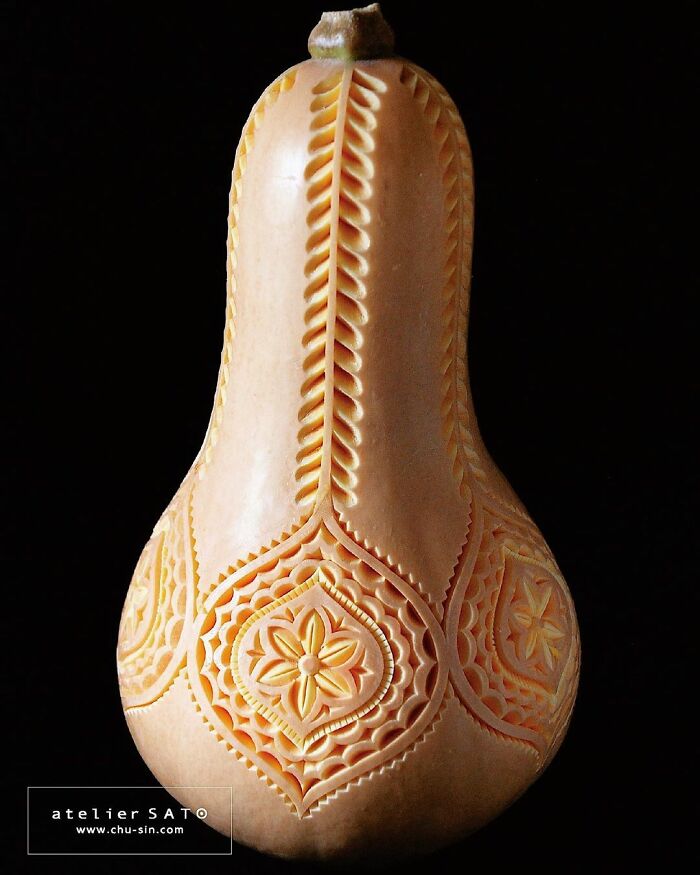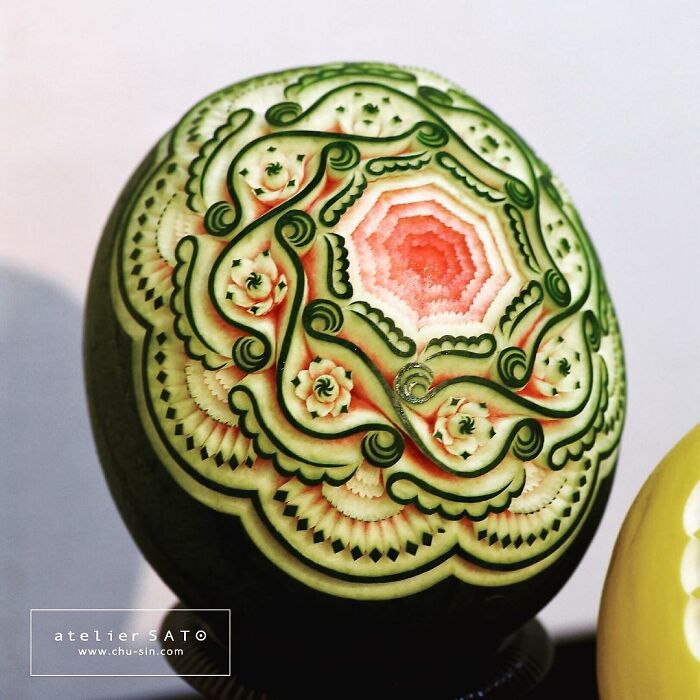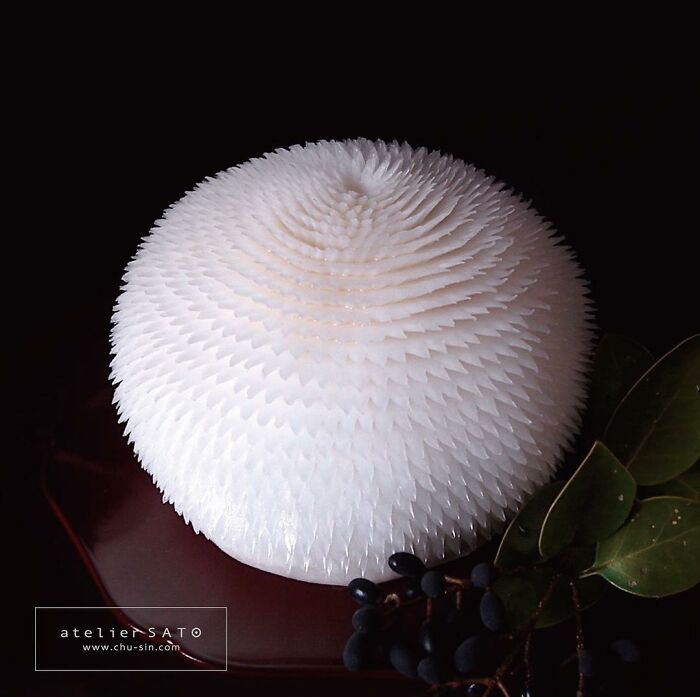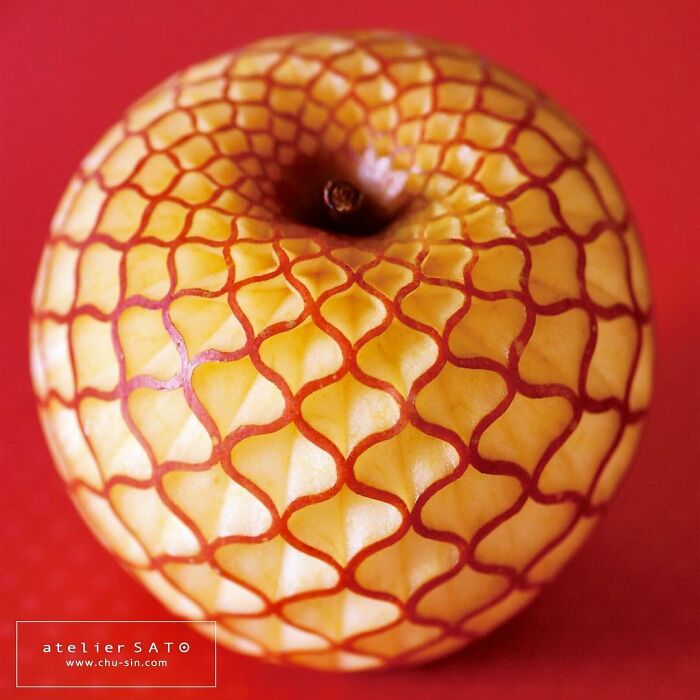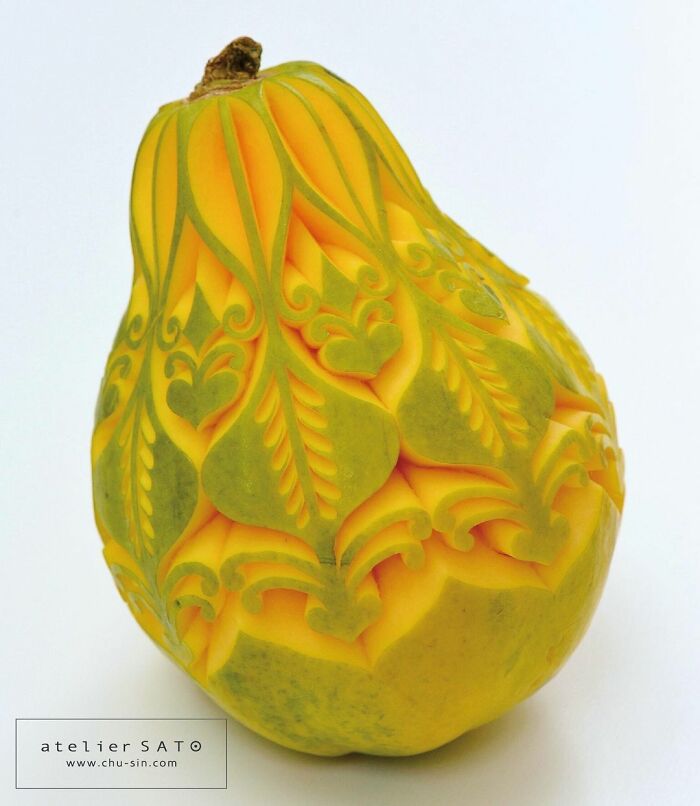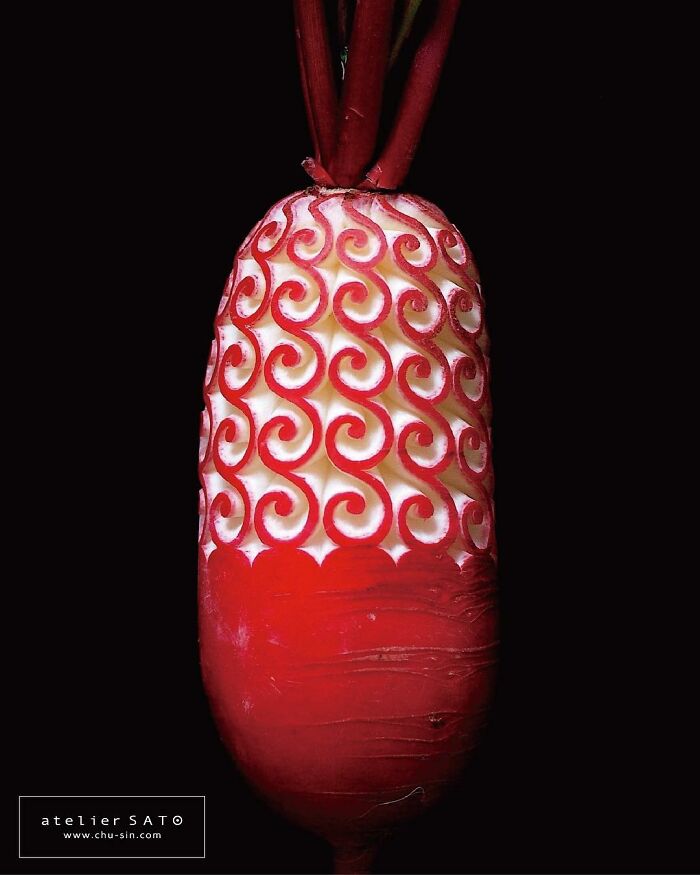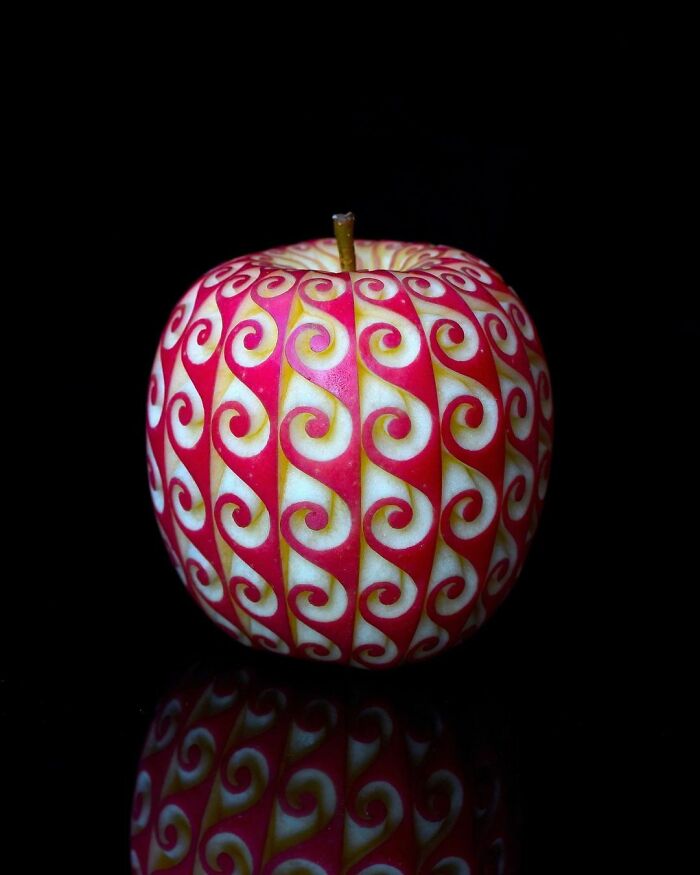
Artist Creates Beautiful Patterns On Fruits And Vegetables By Hand-Carving Intricate Designs
For you and me, an apple is just an apple, and a tomato… you get the logic. But for Japanese artist Tomoko Sato, they’re blank canvases ready to be filled with delicate art.
You see, Tomoko visited Thailand back in 2004 and fell in love with the traditional Thai carving craft. She learned the skill, came back to Kyoto, and shifted from woodworking to carving fruits and vegetables.
Today, Tomoko turns ordinary foods into intricate edible sculptures. Beautiful ornaments, symmetrical patterns, out-of-this-world shapes, all created by hand, reveal Tomoko’s incredible skill and unique talent. And if there’s a watermelon out there I’d be regretful to eat, no matter how delicious it’d be, it would be one that’s been in the hands of Tomoko.
More info: Chu-Sin.com | Facebook | Instagram | Twitter
This post may include affiliate links.
The Japanese were put on this earth to just make the rest of us feel bad about ourselves
Known in Thai as kae sa luk, fruit carving is an art form that requires extreme dedication, subtlety, and an eye for detail. Any fruit or vegetable can become a work of art in the hands of a skilled fruit carver, like cucumbers, apples, or strawberries. One of the most popular choices is watermelon, which is commonly carved into layered flowers, three-dimensional roses, intricate petals, and even delicate swans.
It’s commonly believed that fruit carving originated in China during the Tang Dynasty, which lasted from AD 618-906. Today, these edible pieces of art are not only used in cultural and traditional ceremonies, they can also be found in households, hotels, and restaurants.
Meanwhile, in Thailand, fruit carving is an art and craft in its own right. The first watermelon carvings date back to the Sukhothai dynasty that ruled in the XIV century.
I wonder how they did this without the fruit changing colour and drying out.
The legend says that during the reign of King Phra Ruang, in 1364, the Lady Nang Noppomart wanted her raft to stand out amongst the others in the festival. So she took a flower as a template and carved it into a vegetable. She also carved a tiny bird to sit in the flower. Her skills are said to have impressed King Phra Ruan so much that he decided all Thai women should master it.
These days, fruit and vegetable carvings have gone mainstream and reached Western audiences. It’s widely incorporated into luxury cuisine, wedding displays, and lavish decors.
It is so beautiful and then my best art is maybe a heart shaped bite out of it.
I wonder what happened after these, like I kind of hope no one ate the fruits...
Avocado be like: 11:00 nah 11:30 nah 11:45 maybe 10:00 YESSS 10:01 nah
All of these are simply amazing. The artistry and patience is overwhelming.

 Dark Mode
Dark Mode 

 No fees, cancel anytime
No fees, cancel anytime 














